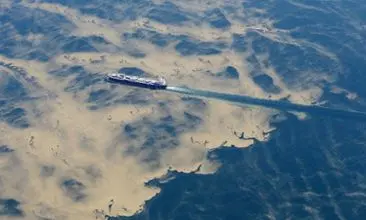JERICO-NEXT - better observations of the status of Europe's coastal waters
The overall aim of the project is to improve observations of the status of Europe's coastal waters by linking existing observation systems and developing new methods. The EU Marine Directive is one of the reasons for the project starting.


Algal blooms between Gotland and Öland on 10 August 2015.
One problem for marine environmental monitoring is capturing natural variations with rapid changes and large spatial variation; for example, algal blooms may take place between sampling occasions.
New technologies for monitoring
New video technology will be used in the project to investigate the spread of algal blooms during the expeditions of R/V Aranda. To increase the sampling frequency, oceanographic measuring buoys are also used in the Baltic Sea and Kattegatt/Skagerrak, profiling floats, and a so-called Ferrybox system on the cargo ship TransPaper. Bio-optical sensors provide new methods of studying algal blooms. Measurement of carbon dioxide and other parameters related to sea acidification is another important part of the project.
Technology for automatic phytoplankton analysis will be used in the project. Several different Imaging Flow Cytometers are used for counting and identifying phytoplankton, focusing on harmful algae. They can be described as a sort of automatic underwater microscope.
Molecular biological methods, including barcoding, are also used.
Intensive study at mussel farm
An intensive study at a mussel farm on the Bohus coast is planned for autumn 2016. The relationships between stratification of the water column, currents, the occurrence of harmful algae and the presence of algal toxins in mussels will be investigated.
Another part of the project deals with physical processes in the ocean. SMHI is also working with the improvement of models and observations of surface currents in the Skagerrak by radar.
About the project
The JERICO-NEXT project is funded by the EU's Horizon 2020 research programme. The project started on 1 September 2015 and will continue for four years.
The project involves 33 different institutes. SMHI will work closely with the Finnish Environment Institute (SYKE), the Institute of Marine Research in Norway and the Norwegian Institute for Water Research (NIVA) as well as the Woods Hole Oceanographic Institution in the United States, among others.
The project is led by IFREMER in France.
Selection of collaborating partners in the project
SYKE - Finnish Environment Institute External link.
External link.
Institute of Marine Research, Norway External link.
External link.
Norwegian Institute for Water Research (NIVA) External link.
External link.

